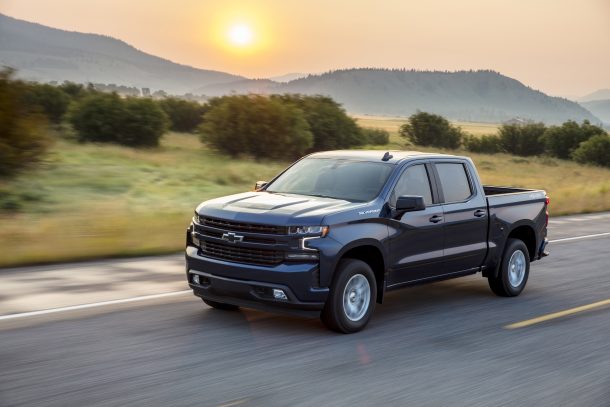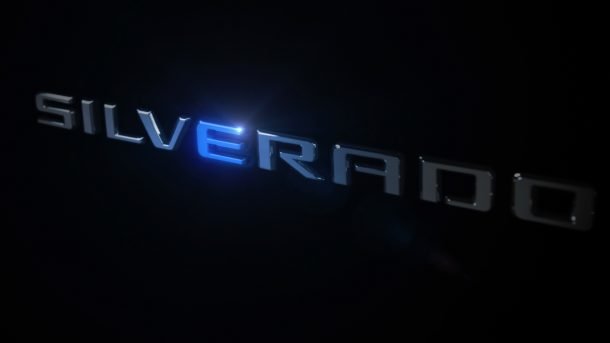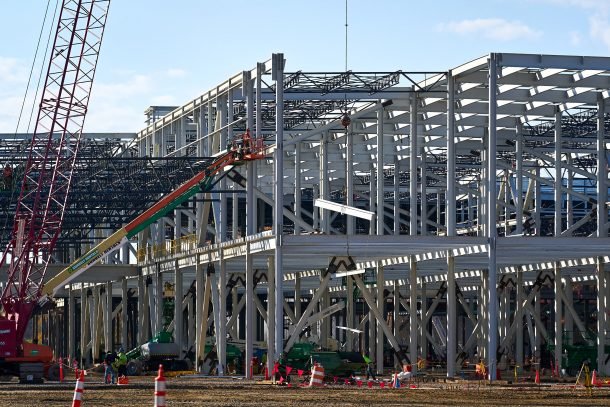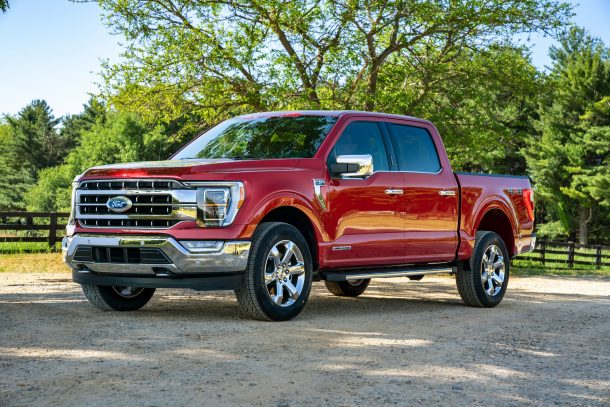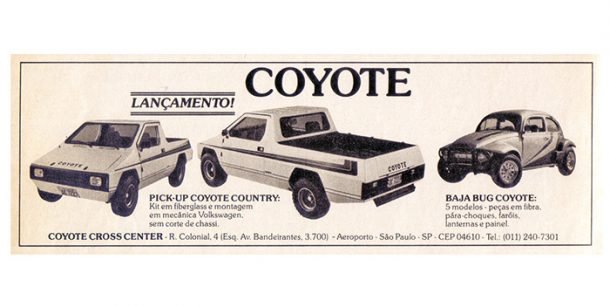 Not long ago, Rare Rides featured the Gurgel XEF, a Brazilian microcar of luxurious intent that was styled like a contemporary Mercedes-Benz, and based on a Volkswagen. Today’s Rare Ride is a very different Brazilian take on the same basic bones.
Not long ago, Rare Rides featured the Gurgel XEF, a Brazilian microcar of luxurious intent that was styled like a contemporary Mercedes-Benz, and based on a Volkswagen. Today’s Rare Ride is a very different Brazilian take on the same basic bones.
Say hello to the Renha Formigão.
Renha was short for Renha Indústria e Comércio de Veículos, which in English meant Renha Industry and Commerce of Vehicles. Founded in Rio de Janeiro, the company was the creation of Paulo Sérgio Renha. Renha was a powerboat racing enthusiast and held a speed record in the Atlantic for a crossing from Santos to Rio de Janeiro.
 Renha previously designed some buggies and cars for other Brazilian firms and decided to found his own car company in 1977. The firm’s original product was a trike with a Volkswagen engine. The initial iteration of the trike faced legislative hurdles, as it occupied a vehicle class not yet recognized by the Brazilian government. Renha revised the trike after its initial debut and added more power and different bodywork, and was able to get it past legalization. It was sold as a kit or a complete bike.
Renha previously designed some buggies and cars for other Brazilian firms and decided to found his own car company in 1977. The firm’s original product was a trike with a Volkswagen engine. The initial iteration of the trike faced legislative hurdles, as it occupied a vehicle class not yet recognized by the Brazilian government. Renha revised the trike after its initial debut and added more power and different bodywork, and was able to get it past legalization. It was sold as a kit or a complete bike.
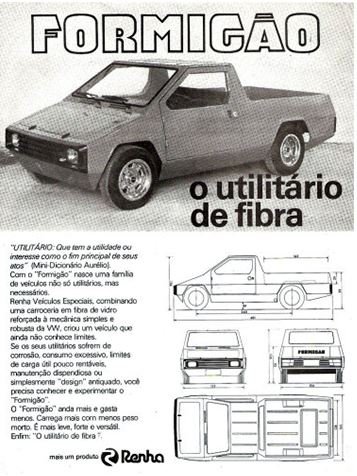 The next year Renha had more ambitious ideas and launched the Formigão. The very small pickup truck body was attached directly to a Volkswagen Beetle chassis. It used a 1.6-liter gas/ethanol engine. Renha created his own body but made no mechanical changes underneath.
The next year Renha had more ambitious ideas and launched the Formigão. The very small pickup truck body was attached directly to a Volkswagen Beetle chassis. It used a 1.6-liter gas/ethanol engine. Renha created his own body but made no mechanical changes underneath.
Said body was designed in fiberglass, focused on utility, and was shaped mostly by a ruler. Renha got some headlamps from a Fiat 127 to complete the square look. The pickup bed could hold up to 1,433 pounds, and its size capacity was about 25 cubic feet.
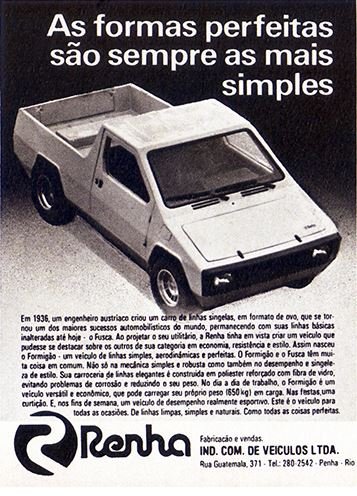 The bed capacity was not as utilitarian as one would hope, however. Volkswagen would not supply the flat design 1.6 from its second-generation Bus to outside companies, so Renha had to make do with the Beetle’s engine in its truck. As a result, there was a pronounced rectangular elevation in the bed.
The bed capacity was not as utilitarian as one would hope, however. Volkswagen would not supply the flat design 1.6 from its second-generation Bus to outside companies, so Renha had to make do with the Beetle’s engine in its truck. As a result, there was a pronounced rectangular elevation in the bed.
Inside, buyers found three-point seatbelts and rode along with the spare tire and battery that resided behind the seats. A luxury trim was also available which offered upgraded alloy wheels, leather seats that reclined, and a useful tachometer.
Formigão remained in production for a short while, as in 1980 Paulo Renha moved on to a newly founded company called Emis and produced his trike there. Formigão was reborn in 1986 as the Coyote, after the company obtained rights from Renha. By that time, Mr. Renha had moved back into his real passion – boats – and started a ship-building firm.
Today’s Rare Ride is a 1979 Formigão from near the conclusion of initial production. With alloy wheels, it’s most likely the upscale luxury model. From the photos, it seems the engine bump issue in the bed was fixed by a later owner, or by Renha later in production. This tiny truck is yours for $14,000.
[Images: Renha]
Become a TTAC insider. Get the latest news, features, TTAC takes, and everything else that gets to the truth about cars first by subscribing to our newsletter.
Related
For GREAT deals on a new or used Nissan check out Nissan of Sumter TODAY!

